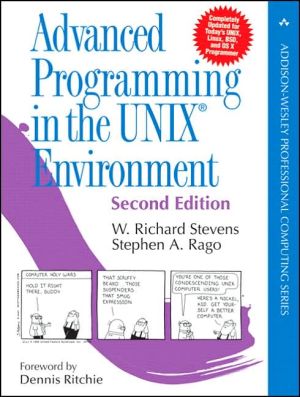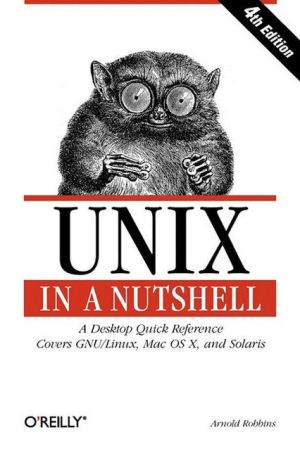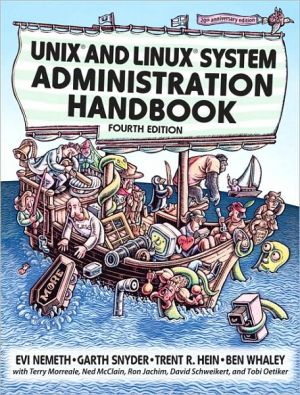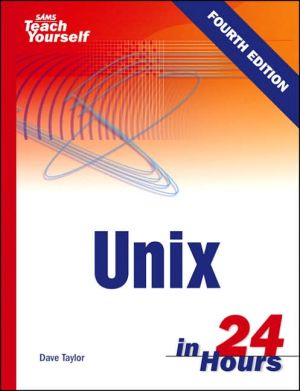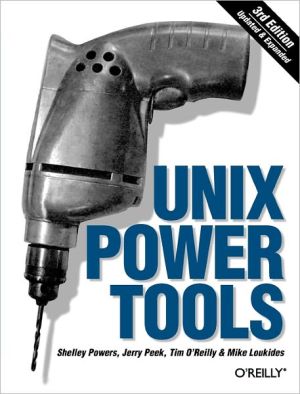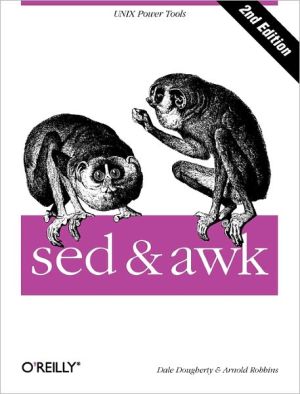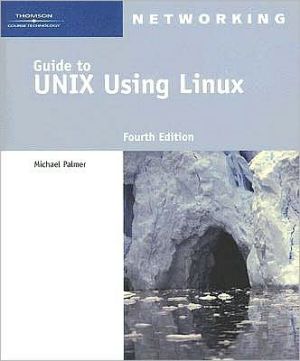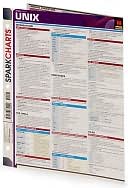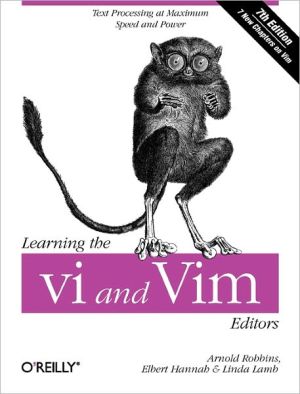Advanced Programming UNIX Environment
"Stephen Rago's update is a long overdue benefit to the community of professionals using the versatile family of UNIX and UNIX-like operating environments. It removes obsolescence and includes newer developments. It also thoroughly updates the context of all topics, examples, and applications to recent releases of popular implementations of UNIX and UNIX-like environments. And yet, it does all this while retaining the style and taste of the original classic."\ --Mukesh Kacker, cofounder and...
Search in google:
Rago (one of the Bell Laboratories developers who built UNIX System V, Release 4) updates the late Stevens' text on programming in the UNIX environment after some 13 years. He has updated the chapters on file input/output (I/O), files and directories, standard I/O library, system data files and information, process environment, process control, process relationships, signals, daemon processes, interprocess communication, network IPC (information processing center), terminal I/O, pseudo terminals, database libraries, and communicating with network printers. Rago has also added chapters on threads, multithreaded programming, and socket interfaces. Interfaces have been brought into line with the 2001 version of the POSIX.1 standard and case studies have been changed to cover more relevant real-world examples, most of which have been tested on the platforms of FreeBSD 5.2.1, the Linux2.4.22 kernel, Solaris 9, and Darwin 7.4.0 (the Free BSD/Mach hybrid underlying Apples Mac OS X 10.3). Annotation ©2005 Book News, Inc., Portland, OR Slashdot.org This book is no superficial rewrite of the first edition. From cover to cover, it's apparent that Rago has carefully interpreted the original text and rewritten it to accurately reflect the changes of the past 13 years; he has also managed to preserve to original lucid and efficient presentation style of Stevens' classic.
Introduction \ Rich Stevens and I first met through an e-mail exchange when I reported a typographical error in his first book, UNIX Network Programming. He used to kid me about being the person to send him his first errata notice for the book. Until his death in 1999, we exchanged e-mail irregularly, usually when one of us had a question we thought the other might be able to answer. We met for dinner at USENIX conferences and when Rich was teaching in the area.\ Rich Stevens was a friend who always conducted himself as a gentleman. When I wrote UNIX System V Network Programming in 1993, I intended it to be a System V version of Rich's UNIX Network Programming. As was his nature, Rich gladly reviewed chapters for me, and treated me not as a competitor, but as a colleague. We often talked about collaborating on a STREAMS version of his TCP/IP Illustrated book. Had events been different, we might have actually done it, but since Rich is no longer with us, revising Advanced Programming in the UNIX Environment is the closest I'll ever get to writing a book with him.\ When the editors at Addison-Wesley told me that they wanted to update Rich's book, I thought that there wouldn't be too much to change. Even after 13 years, Rich's work still holds up well. But the UNIX industry is vastly different today from what it was when the book was first published.\ \ The System V variants are slowly being replaced by Linux. The major system vendors that ship their hardware with their own versions of the UNIX System have either made Linux ports available or announced support for Linux. Solaris is perhaps the last descendant of UNIX System V Release 4with any appreciable market share.\ After 4.4BSD was released, the Computing Science Research Group (CSRG) from the University of California at Berkeley decided to put an end to its development of the UNIX operating system, but several different groups of volunteers still maintain publicly available versions.\ The introduction of Linux, supported by thousands of volunteers, has made it possible for anyone with a computer to run an operating system similar to the UNIX System, with freely available source code for the newest hardware devices. The success of Linux is something of a curiosity, given that several free BSD alternatives are readily available.\ Continuing its trend as an innovative company, Apple Computer abandoned its old Mac operating system and replaced it with one based on Mach and FreeBSD.\ \ Thus, I've tried to update the information presented in this book to reflect these four platforms.\ After Rich wrote Advanced Programming in the UNIX Environment in 1992, I got rid of most of my UNIX programmer 's manuals. To this day, the two books I keep closest to my desk are a dictionary and a copy of Advanced Programming in the UNIX Environment. I hope you find this revision equally useful. Changes from the First Edition\ Rich's work holds up well. I've tried not to change his original vision for this book, but a lot has happened in 13 years. This is especially true with the standards that affect the UNIX programming interface.\ Throughout the book, I've updated interfaces that have changed from the ongoing efforts in standards organizations. This is most noticeable in Chapter 2, since its primary topic is standards. The 2001 version of the POSIX.1 standard, which we use in this revision, is much more comprehensive than the 1990 version on which the first edition of this book was based. The 1990 ISO C standard was updated in 1999, and some changes affect the interfaces in the POSIX.1 standard.\ A lot more interfaces are now covered by the POSIX.1 specification. The base specifications of the Single UNIX Specification (published by The Open Group, formerly X/Open) have been merged with POSIX.1. POSIX.1 now includes several 1003.1 standards and draft standards that were formerly published separately. Accordingly, I've added chapters to cover some new topics. Threads and multithreaded programming are important concepts because they present a cleaner way for programmers to deal with concurrency and asynchrony.\ The socket interface is now part of POSIX.1. It provides a single interface to interprocess communication (IPC), regardless of the location of the process, and is a natural extension of the IPC chapters.\ I've omitted most of the real-time interfaces that appear in POSIX.1. These are best treated in a text devoted to real-time programming. One such book appears in the bibliography.\ I've updated the case studies in the last chapters to cover more relevant real-world examples. For example, few systems these days are connected to a PostScript printer via a serial or parallel port. Most PostScript printers today are accessed via a network, so I've changed the case study that deals with PostScript printer communication to take this into account.\ The chapter on modem communication is less relevant these days. So that the original material is not lost, however, it is available on the book's Web site in two formats: PostScript (http://www.apuebook.com/lostchapter/modem.ps) and PDF (http://www.apuebook.com/lostchapter/modem.pdf). The source code for the examples shown in this book is also available at www.apuebook.com. Most of the examples have been run on four platforms:\ \ FreeBSD 5.2.1, a derivative of the 4.4BSD release from the Computer Systems Research Group at the University of California at Berkeley, running on an Intel Pentium processor\ Linux 2.4.22 (the Mandrake 9.2 distribution), a free UNIX-like operating system, running on Intel Pentium processors\ Solaris 9, a derivative of System V Release 4 from Sun Microsystems, running on a64-bit UltraSPARC IIi processor\ Darwin 7.4.0, an operating environment based on FreeBSD and Mach, supported by Apple Mac OS X, version 10.3, on a PowerPC processor\ \ Stephen A. Rago\ Warren, New Jersey\ April 2005\ sar@apuebook.comPreface to the First EditionIntroduction\ This book describes the programming interface to the Unix system—the system call interface and many of the functions provided in the standard C library. It is intended for anyone writing programs that run under Unix.\ Like most operating systems, Unix provides numerous services to the programs that are running — open a file, read a file, start a new program, allocate a region of memory, get the current time-of-day, and so on. This has been termed the system call interface. Additionally, the standard C library provides numerous functions that are used by almost every C program (format a variable's value for output, compare two strings, etc.).\ The system call interface and the library routines have traditionally been described in Sections 2 and 3 of the Unix Programmer 's Manual. This book is not a duplication of these sections. Examples and rationale are missing from the Unix Programmer 's Manual, and that's what this book provides. Unix Standards\ The proliferation of different versions of Unix during the 1980s has been tempered by the various international standards that were started during the late 1980s. These include the ANSI standard for the C programming language, the IEEE POSIX family (still being developed), and the X/Open portability guide. This book also describes these standards. But instead of just describing the standards by themselves, we describe them in relation to popular implementations of the standards — System V Release 4 and the forthcoming 4.4BSD. This provides a real-world description, which is often lacking from the standard itself and from books that describe only the standard. Organization of the Book\ This book is divided into six parts: An overview and introduction to basic Unix programming concepts and terminology (Chapter 1), with a discussion of the various Unix standardization efforts and different Unix implementations (Chapter 2).\ \ I/O—unbuffered I/O (Chapter 3), properties of files and directories (Chapter 4), the standard I/O library (Chapter 5), and the standard system data files (Chapter 6).\ Processes — the environment of a Unix process (Chapter 7), process control (Chapter 8), the relationships between different processes (Chapter 9), and signals (Chapter 10).\ More I/O — terminal I/O (Chapter 11), advanced I/O (Chapter 12), and daemon processes (Chapter 13).\ IPC—Interprocess communication (Chapters 14 and 15).\ Examples—a database library (Chapter 16), communicating with a PostScript printer (Chapter 17), a modem dialing program (Chapter 18), and using pseudo terminals (Chapter 19).\ \ A reading familiarity with C would be beneficial as would some experience using Unix. No prior programming experience with Unix is assumed. This text is intended for programmers familiar with Unix and programmers familiar with some other operating system who wish to learn the details of the services provided by most Unix systems. Examples in the Text\ This book contains many examples—approximately 10,000 lines of source code. All the examples are in the C programming language. Furthermore, these examples are in ANSI C. You should have a copy of the Unix Programmer's Manual for your system handy while reading this book, since reference is made to it for some of the more esoteric and implementation-dependent features.\ Almost every function and system call is demonstrated with a small, complete program. This lets us see the arguments and return values and is often easier to comprehend than the use of the function in a much larger program. But since some of the small programs are contrived examples, a few bigger examples are also included (Chapters 16, 17, 18, and 19). These larger examples demonstrate the programming techniques in larger, real-world examples. Systems Used to Test the Examples\ Unfortunately all operating systems are moving targets. Unix is no exception. The following diagram shows the recent evolution of the various versions of System V and 4.xBSD.\ 4.xBSD are the various systems from the Computer Systems Research Group at the University of California at Berkeley. This group also distributes the BSD Net 1 and BSD Net 2 releases — publicly available source code from the 4.xBSD systems. SVRx refers to System V Release x from AT&T. XPG3 is the X/Open Portability Guide, Issue 3, and ANSI C is the ANSI standard for the C programming language. POSIX.1 is the IEEE and ISO standard for the interface to a Unix-like system. We'll have more to say about these different standards and the various versions of Unix in Sections 2.2 and 2.3.\ In this text we use the term 4.3+BSDto refer to the Unix system from Berkeley that is somewhere between the BSD Net 2 release and 4.4BSD. At the time of this writing, 4.4BSD was not released, so the system could not be called 4.4BSD. Nevertheless a simple name was needed to refer to this system and 4.3+BSD is used throughout the text.\ Most of the examples in this text have been run on four different versions of Unix: Unix System V/386 Release 4.0 Version 2.0 (''vanilla SVR4'') from U.H. Corp. (UHC), on an Intel 80386 processor.\ \ 4.3+BSD at the Computer Systems Research Group, Computer Science Division, University of California at Berkeley, on a Hewlett Packard workstation.\ BSD/386 (a derivative of the BSD Net 2 release) from Berkeley Software Design, Inc., on an Intel 80386 processor. This system is almost identical to what we call 4.3+BSD.\ SunOS 4.1.1 and 4.1.2 (systems with a strong Berkeley heritage but many System V features) from Sun Microsystems, on a SPARCstation SLC.\ \ Numerous timing tests are provided in the text and the systems used for the test are identified.\ W. Richard Stevens\ Tucson, Arizona\ April 1992
Ch. 1UNIX system overview1Ch. 2UNIX standardization and implementations25Ch. 3File I/O59Ch. 4Files and directories87Ch. 5Standard I/O library133Ch. 6System data files and information161Ch. 7Process environment179Ch. 8Process control209Ch. 9Process relationships261Ch. 10Signals289Ch. 11Threads355Ch. 12Thread control387Ch. 13Daemon processes423Ch. 14Advanced I/O441Ch. 15Interprocess communication495Ch. 16Network IPC : sockets545Ch. 17Advanced IPC585Ch. 18Terminal I/O631Ch. 19Pseudo terminals675Ch. 20A database library709Ch. 21Communicating with a network printer753
\ Slashdot.orgThis book is no superficial rewrite of the first edition. From cover to cover, it's apparent that Rago has carefully interpreted the original text and rewritten it to accurately reflect the changes of the past 13 years; he has also managed to preserve to original lucid and efficient presentation style of Stevens' classic.\ \
